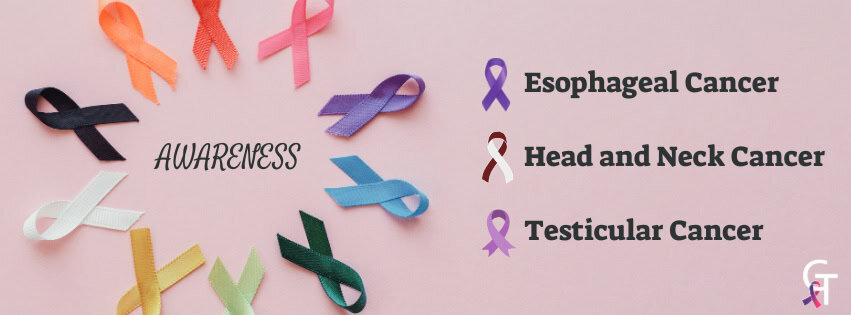According to the American Association for Cancer Research…
Esophageal Cancer forms in the lining of the esophagus. The esophagus is a long, muscular tube connecting the throat to the stomach.The two most common forms of esophageal cancer are: squamous cell carcinoma and adenocarcinoma.
According to the National Cancer Institute, an estimated 22,070 people living in the United States will be diagnosed with esophageal cancer in 2025 and about 16,250 will die of the disease. The five-year relative survival rate for people with esophageal cancer is about 21.9%.
Smoking, excessive consumption of alcoholic beverages, and a condition known as Barrett’s esophagus can increase a person’s risk of developing esophageal cancer. This cancer is also more common in men than women.
Head and neck cancers usually begin in the squamous cells that line the mucosal surfaces inside the mouth, nose, throat, and salivary glands. These are referred to as squamous cell carcinomas of the head and neck. Head and neck cancers also include less common cancers that occur in the salivary glands, sinuses, muscles, and nerves of the head and neck region.
Head and neck cancers account for nearly 4% of all cancers in the United States, according to the National Cancer Institute (NCI). The NCI estimates that about 72,680 cancers of the oral cavity, pharynx, and larynx will be diagnosed in the United States and 16,680 people will die from these diseases in 2025.
Head and neck cancer is more common among men than women. These cancers are diagnosed more often in people over age 50 than in younger people and more often in Asian individuals than in individuals of other races. Environmental exposures that can increase your risk for head and neck cancer include tobacco, alcohol, betel quid, wood dust, and radiation. Head and neck cancer can also be caused by certain strains of HPV or by the Epstein-Barr virus.
Cancer of the testis, or testicular cancer, is a relatively uncommon disease. It accounts for about 0.5% of all the cancers diagnosed in the United States every year. In 2025, according to estimates by the National Cancer Institute, about 9,720 men will be diagnosed with testicular cancer, and about 600 will die from it.
Genetics and family history play a large role in testicular cancer. Family history is one of the strongest risk factors currently known for testicular cancer: a man is much more likely to develop testicular cancer if his brother or father had it before him, than if they didn’t. Another important risk factor is having an undescended testicle, or having abnormal development of a testicle. However, testicular cancer also occurs in men who have none of these risk factors.
Testicular cancer forms when cancerous cells develop in one or both testicles. Almost all begin in the germ cells of the testicles, which are responsible for producing immature sperm before the sperm travels to the epididymis where it is stored and matures. The two main types of these testicular germ cell tumors are seminomas and nonseminomas, with nonseminomas typically being more aggressive

